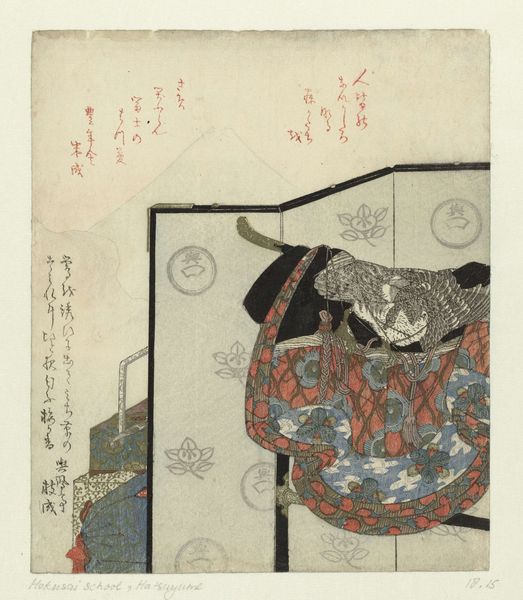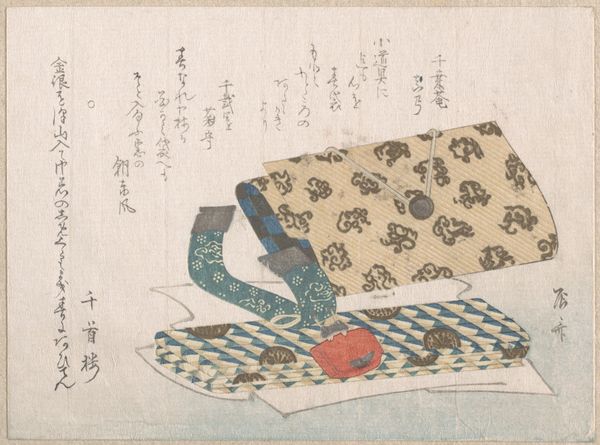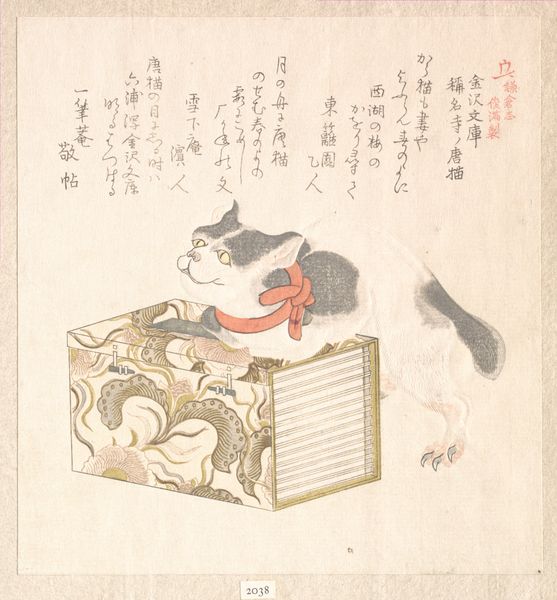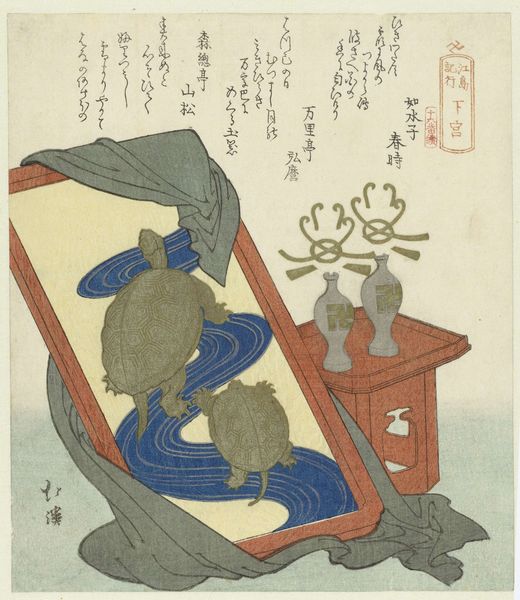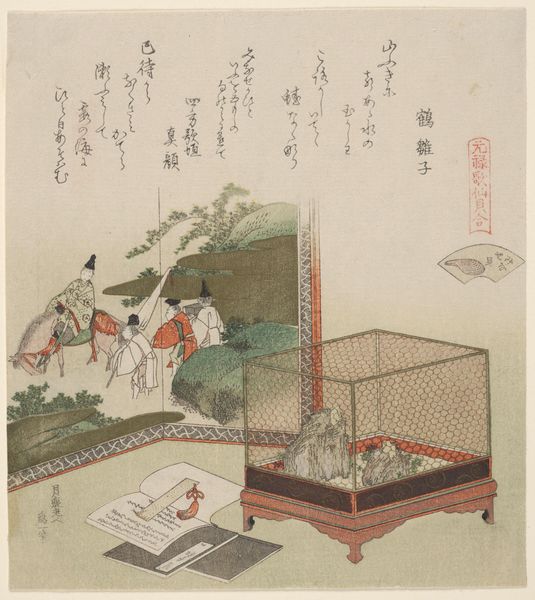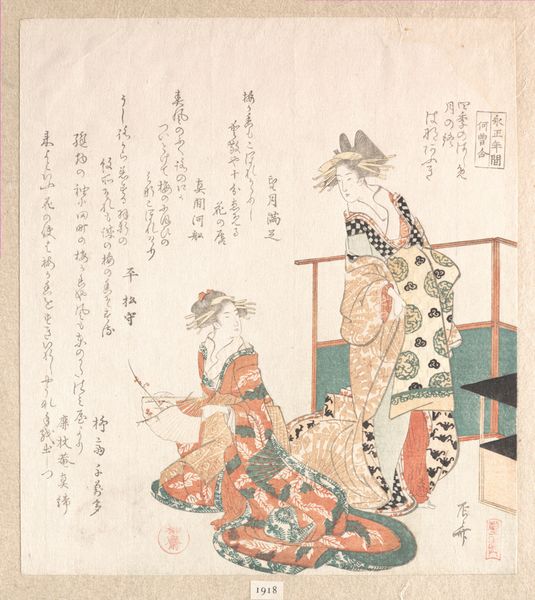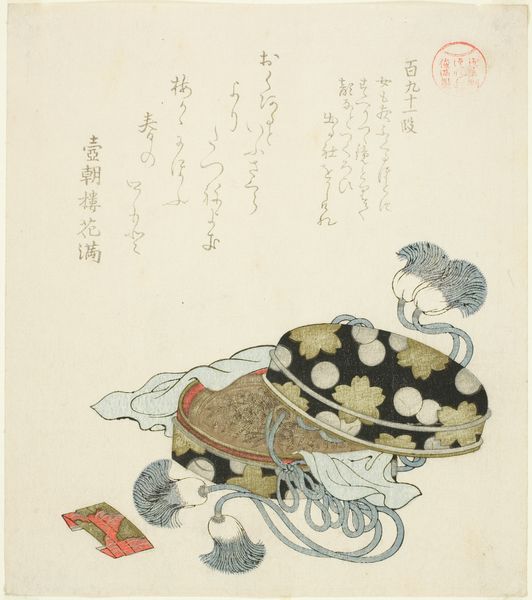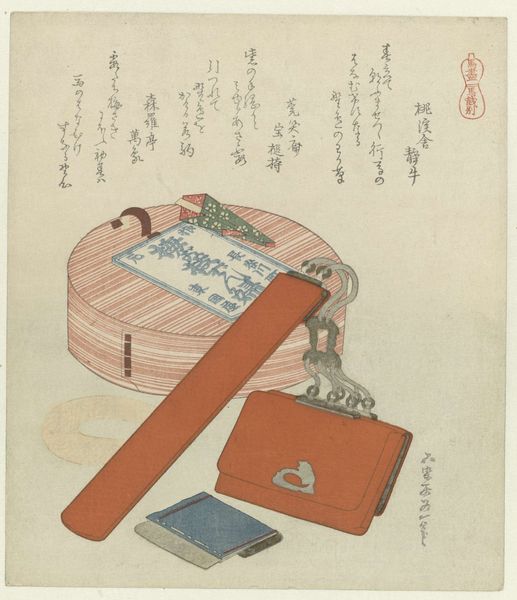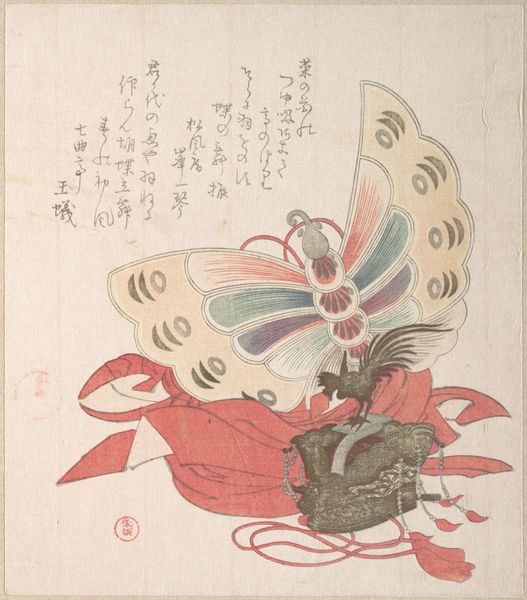
print, woodblock-print
# print
#
asian-art
#
ukiyo-e
#
figuration
#
woodblock-print
#
genre-painting
Dimensions: height 208 mm, width 186 mm
Copyright: Rijks Museum: Open Domain
This print titled ‘Lakdoos en doek’ was made by Kikugawa Eishin in Japan. Although not dated, we know that Eishin worked primarily in the late Edo period, so it probably dates from the first decades of the 19th century. In it, we see a black lacquered box with a design of bamboo shoots. A piece of white fabric drapes over the lower half of the image, and on the fabric is a depiction of a noh mask. There is Japanese calligraphy on the right of the image. As social historians, we seek to contextualize the image in its social and institutional history. Noh theatre was originally performed for aristocratic audiences. By Eishin’s time, it had a broader social reach. Research into the Kabuki theatre of his time, a popular form of entertainment, would give a deeper understanding of the place of art in Japanese society at the time, and the politics of imagery.
Comments
No comments
Be the first to comment and join the conversation on the ultimate creative platform.


